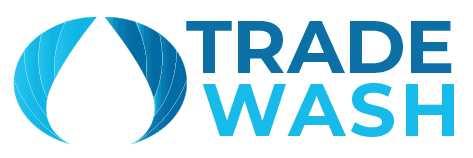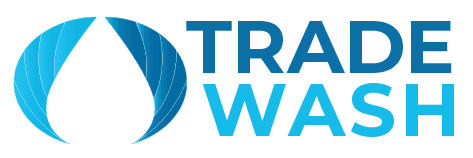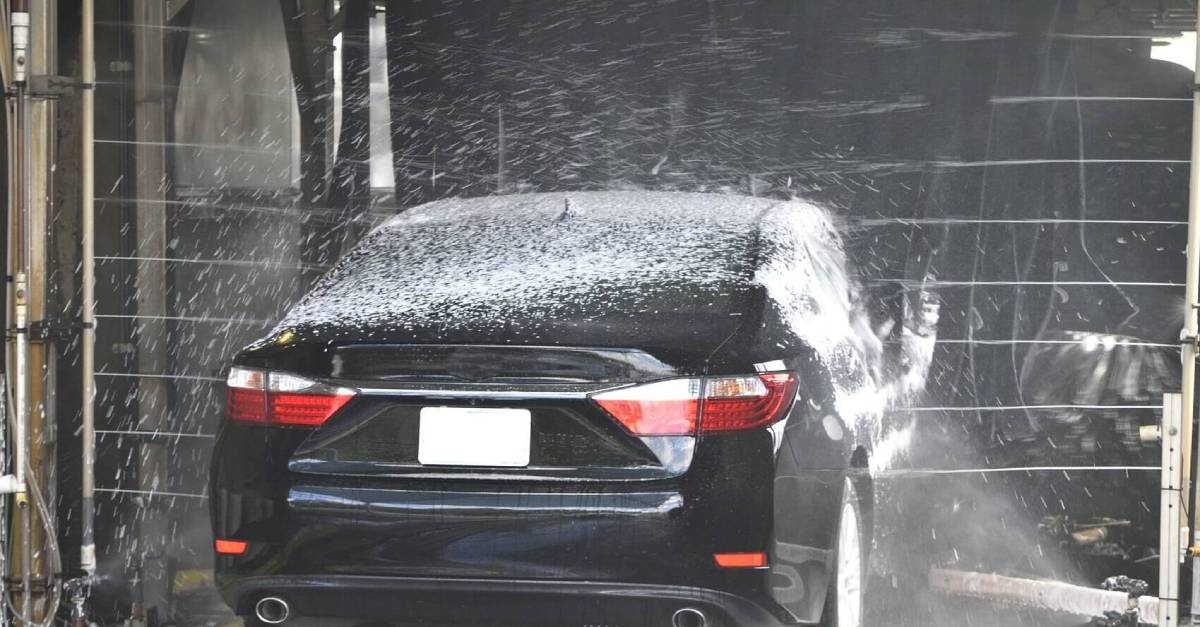Vehicle Washdown – Why It’s Important And Who Needs To Do It?
Key points: Vehicle washdown is a standard procedure for working vehicle’s. However, the importance of wash down has a much deeper significance than just maintaining clean vehicles. By performing an on-site wash down, you remove the contaminants stuck on the vehicle’s surface, including oil, harmful chemicals, pathogens, and noxious weed seeds. As well as that, the Australian legislation requires this washdown water to be kept away from municipal storm drain systems. Although all of this may seem like a challenge, a quality wash bay can help you meet all of the demands. Read on to learn more.
Industrial and agricultural vehicles come into constant contact with their working environment and naturally get dirty in the process. Although our eyesight registers this grime as (soil-based) dirt, this is far from the truth from a chemical and environmental point of view.
The visible and invisible layers of dirt that aggregate the tires, wheels, and entire vehicle’s exterior may include contaminants of various kinds.
The exact kind of contaminants depends on the location, industry, and activity.
-
- Mining industry vehicle grime can include chemicals used in the ore extraction and traces of various elements originating in the mines.
- Oil industry vehicle grime can be rich in hydrocarbon pollution.
- Agricultural vehicle dirt can contain traces of pesticides and chemical fertilizers, as well as pathogen microorganisms and noxious weed seeds.
- Marine trade vehicles can carry various contaminants that can come from abroad.
On top of it all, motor vehicles’ dirt always contains traces of fuel, motor oil, and other oil-based chemicals included in vehicle maintenance.
These are all the reasons to perform a thorough wash down of contaminated equipment before leaving the site – as required by law.
Vehicle wash down importance: Biological contamination example
Biological contamination by foreign pathogens or invasive species is an important issue but is sometimes overlooked.
For sensitive ecosystems such as Australia, invasive species are hazardous to introduce and challenging to control. As these ecosystems and their species have evolved independently and in isolation, pressure from pathogen species that are highly competitive can deal a devastating blow to the local ecological balance but also cause extensive economic damage at the same time.
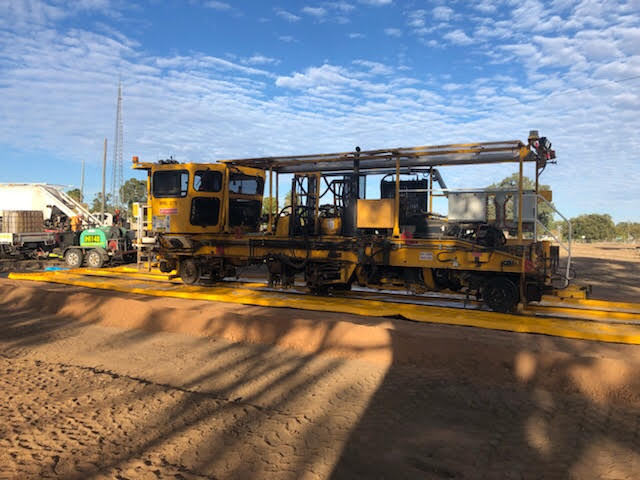
Heavy duty wash bays for trains
Despite some of the most famous examples of noxious species introduction being purposeful, most invasive species were introduced by accident – and many of them by vehicles.
Noxious weeds and vehicles have a peculiar symbiosis. Many of these plants thrive on disturbed sites, which is precisely the environment created by the activities of working vehicles. That is why the machines involved with agricultural, construction, and mining operations have an increased chance of catching and transporting the seeds of unwanted plants.
Although unwanted species transfer is often mentioned as an environmental issue, the real influence goes way beyond endangering biodiversity. The economic cost of weeds in Australian agricultural areas alone is approximately 4 billion dollars annually – and that’s just the plants. Transfer of microscopic pathogens from one place to another can also cause massive outbreaks with unpredictable and overwhelming losses.
Everything stated above makes a good case for strict prevention laws. Australia and New Zealand have some of the most stringent biosecurity laws in the world; these also include local prevention of the spread of the already-established invasive species.
Proper washdown practices, completed with the collection and treatment of washdown wastewater, are fundamental in curbing the further spread of invasive and pathogenic organisms.
Keeping the washdown wastewater out of the stormwater system is highly important; however, even in remote areas with no stormwater systems, it is crucial to contain the washdown wastewater and isolate it at the source to stop the unwanted biological agents from spreading directly into the environment and neighboring properties and or work sites.
That is why the handling of all wash down wastewater is defined by local environmental laws and recommendations, complementary with the biosecurity legislation.
The Solution – Washdown Bay
Suppose a washdown procedure is a mandatory part of your business. In that case, a specialized washdown system will ensure thorough and efficient cleaning that meets all legal criteria on washdown and washdown management.

Portable Washbay
All institutions recommend the use of built wash bays – and with a good reason. The core feature of these washdown facilities is that they include effective effluent management systems that will ensure that wastewater will be safely stored for further treatment whilst being isolated from the stormwater network.
To meet the wash down wastewater management requirements, Trade Enviro can provide portable wash bays and permanent in situ concrete systems – customized according to your needs.
The advantages of having your own wash down system are numerous.
A portable wash bay system will save you a lot of money compared to a partnership with a car washing company, and the initial investment will pay itself off quickly.
If you need to move it, the portable system will allow this with little cost and effort – because it was designed with migration in mind.
Despite being light, a mobile wash bay still meets all the criteria for storing or treating the contaminated wastewater, making your business environmentally compliant, and safeguarding our environment.
The wastewater can either be recycled, treated, and discharged into the sewer system or held in a holding tank before it’s taken .
A mobile wash bay with an oil water separator will ensure that your operations meet water authority standards.
General wash down standard
Most states have their own washdown strategies and recommendations. Still, some general cleaning principles apply:
- Wash down should be done according to the general wash down procedures from in the official washdown guidelines such as this one.
- Before beginning the cleaning, remove only those cover plates that can be easily removed and replaced.
- After the washdown, no clods of loose soil or dirt should be present. Depending on the activity, smeared soil stains and soil lodged in inaccessible areas may be accepted.
- Grills, radiators, and the vehicle interior should be free of all plant material, including the seeds.
- Wheel washing should always be included in the wash down procedure.
- Inspection should always follow the washdown.
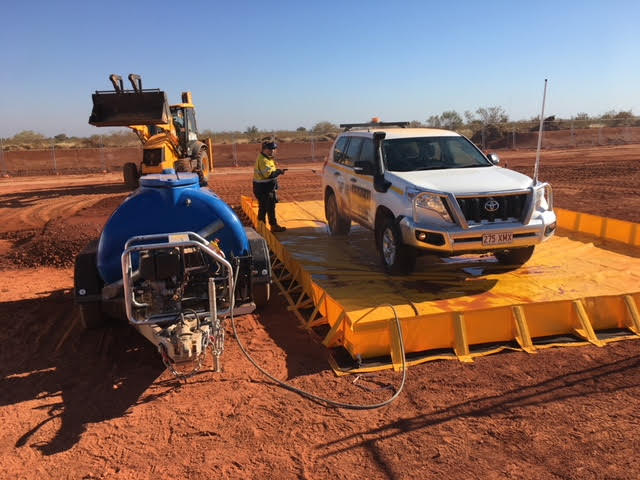
Wash Bay for Remote Pathogen Control
Always comply with the vehicle manufacturer’s cleaning and maintenance guidelines to avoid damaging sensitive electronics.
Different industries have varying specific guidelines depending on their activities and known pollutant exposure. For example, procedures for construction site equipment washing might not cover details on chemical pollutants as much as the guideline for mining or oil industry vehicle washdown. Therefore, a wash-through in a construction site might differ from the wash-through for mining or oil industry vehicles. Still, two things are certain – it is crucial to give all working vehicles a wash down before leaving the site; also, it is equally vital to store and treat all washdown wastewater as if it was contaminated.
To Take Away
Working vehicle wash down is mandatory by environmental and biosecurity regulation, as vehicles can be a significant vector for spreading chemical and biological pollution. However, all the effort that goes into proper vehicle washdown can be annulled with improper disposal of wash down wastewater.
Luckily, the cleverly designed mobile and permanent wash down bays offer a solution for the entire wash down management chain – from the first cleansing splash to wastewater storage and treatment.
Our experienced professionals at Trade Enviro will be happy to help you find the best custom solution for your requirements. Contact us today to find a washdown solution perfectly fitting for your operation.
